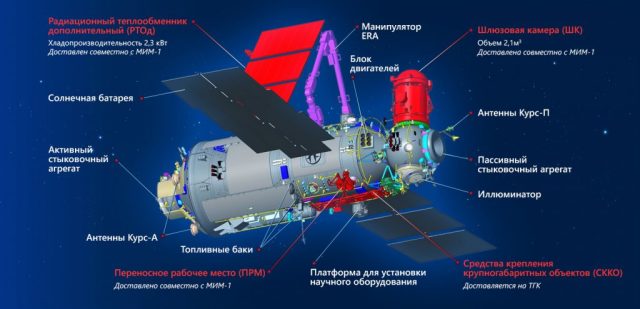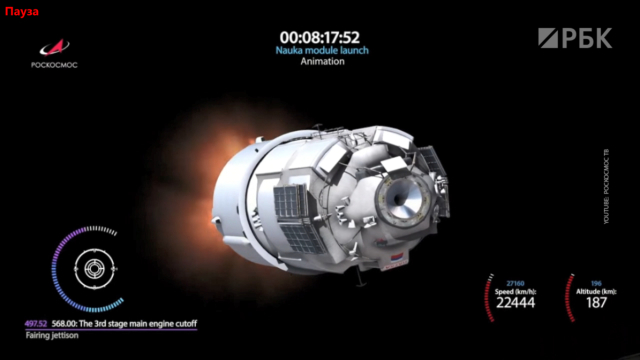Roscosmos specialists managed to launch the main engines of the new Nauka module. Earlier it was reported about technical problems that occurred after the start.
Anatoly Zak, the founder of the RussianSpaceWeb website, announced the successful test activation of the correction and convergence engines . There is no official confirmation from the space agency yet.
The Nauka module was launched using a heavy Proton-M rocket on July 21. Shortly after the launch, the media reported about technical problems that occurred on board. At least some of them concerned the fuel system, which, according to some experts, put the entire mission at risk. Later it became known that it was possible to activate the auxiliary engines.
#Nauka update: According to a source, a potentially mission-saving firing of DKS engines (pictured by me) was scheduled between 21:00 and 21:30 Moscow (2-2:30 p.m. EDT) or half an hour from now, if this info is correct. CONTEXT: https://t.co/rugP3QUzrS pic.twitter.com/c1ZXGZcqdb- Anatoly Zak (@RussianSpaceWeb) July 23, 2021
The multifunctional laboratory module "Science — - "dolgostroy" began to create a complex back in 1995. Initially, it was conceived as a stand-in for the ISS Zarya module. At first, they wanted to launch it in 2007, but later the dates were repeatedly postponed.
In 2013, the "Science" module was sent to the Khrunichev Center, as during its examination, metal chips were detected in the fuel system. To solve the problem, it was proposed to replace the tanks with those converted from the Fregat upper stage, but then they decided to send Nauka into space with regular tanks.

"Science"
Image source: Roscosmos
The main purpose of the module is to increase the technical and operational capabilities of the Russian segment of the ISS. It is assumed that thanks to "Science" it will be possible to implement an extensive program of scientific research — both in the interests of fundamental science and for various areas of the social sphere. The weight of the module is up to 21,300 kilograms.
Among other things, Nauka has a European ERA manipulator, thanks to which it is possible to perform a number of works without going into outer space. In general, the integration of the module to the ISS will ensure reliable operation of the Russian segment of the station for years to come.
At the same time, the launch of "Science" does not solve the main conceptual challenges, the main of which can be formulated as follows: what to do when the International Space Station is gone? The Western response was the Lunar Gateway project, which became part of the ambitious Artemis program aimed at landing astronauts on the Moon.
Russia, in turn, intends to build a national orbital station and even, as it became known this year, may leave the international project ahead of schedule. It is assumed that its station will be significantly smaller than the ISS and will turn out to be a kind of analogue of Mir, whose operation was completed in 2001.

